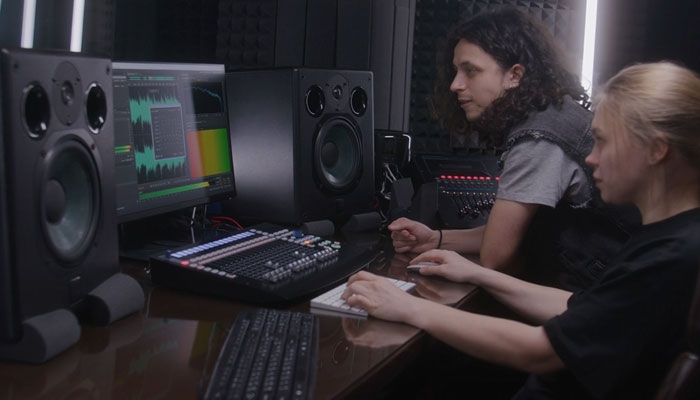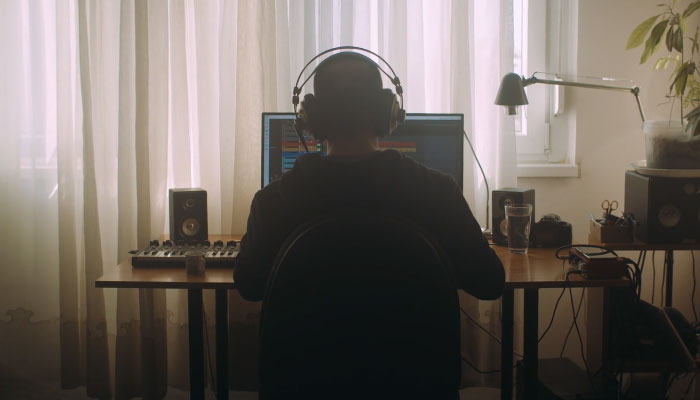Of the three stages of music production, mastering is probably the most confusing. Does it really improve a song's sound, or does it simply make it louder?
Even now, when a mastering engineer walks me through their process, it feels like something between magic and an art form. I don't know exactly what's going on, but sometimes, whatever happens enhances the quality and beauty of tracks.
Reality is, mastering is all about refinement. It may seem subtle, or even unnecessary at times, but it's the final touch that can turn a great track into something unforgettable. It can also make a poor mix sound just as bad, only louder!
This post-production process is a separate discipline, and recording and mixing skills won't necessarily prepare you for it. Mastering is a fascinating blend of both technical knowledge and musical intuition, in which the final result is not just a louder track, but one with the sonic characteristics that magnify an artist's vision.
In this article, we'll explore the role of mastering in music production and how a professional approach can bring out the full beauty of your songs. We'll also talk about the most important tools that can help you become a professional mastering engineer, including one of the powerful mastering tools: Boris FX Sequoia.
Let's dive in!
What is Mastering in Music
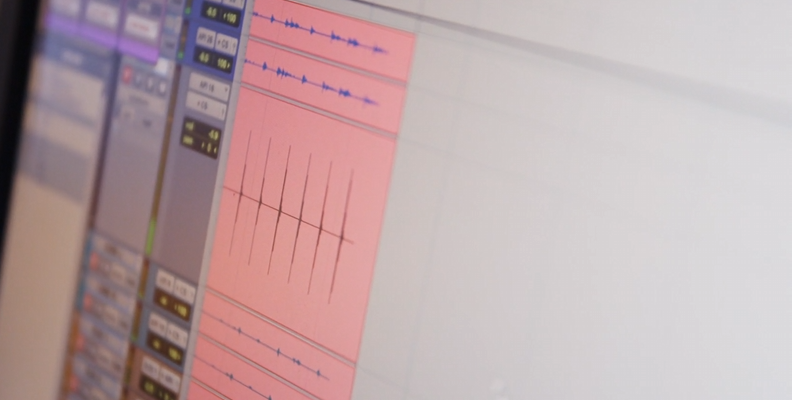
Mastering is the final stage in the post-production process. Here, the goal of an engineer is to bring together all separate tracks (the stereo mixdown) into a finished product ready for distribution.
So why does the mixing engineer not handle the mastering process themselves?
Here’s the thing: the mixing process is when the mixing engineer balances levels, panning, and shapes the sound of individual instruments. On the other hand, the mastering stage takes the stereo file, and not the individual tracks, and treats it as a unique piece of music.
We can put it this way: a mixing engineer makes sure every element of your track has its own place in the soundstage, whereas a professional mastering engineer focuses on how the song sounds as a whole.
The mastering engineer takes the stereo mix and makes final adjustments and enhancements to the entire soundstage, so that the song sounds at its best, regardless of the speaker systems used by the listeners. We'll talk more about this in the next section.
Ideally, a real mastering engineer should have access to a high-quality listening environment; a mastering studio where they can analyze how the frequency spectrum behaves, preserve dynamic range, adjust stereo imaging, and set loudness levels to the standards demanded by the industry.
The tricky part is that a song might sound phenomenal in the mastering studio, but totally different when listened to in a different environment, like in the car or with affordable earbuds. The role of a mastering engineer is to make sure a song will sound great regardless of how listeners experience it.
Other tasks usually handled by a mastering engineer are converting sample rates and preparing a master disc cutting for vinyl records.
There are engineers who specialize in analog mastering, using vintage tools that can help create music with a timeless vibe. It's usually more expensive than digital mastering, but very much sought after, especially in genres like rock, funk, jazz, and alternative electronic music.
Even if your music is distributed only digitally, the audio mastering is what gives you the finished master you’ll share with the world.
What Are the Main Goals of Music Mastering
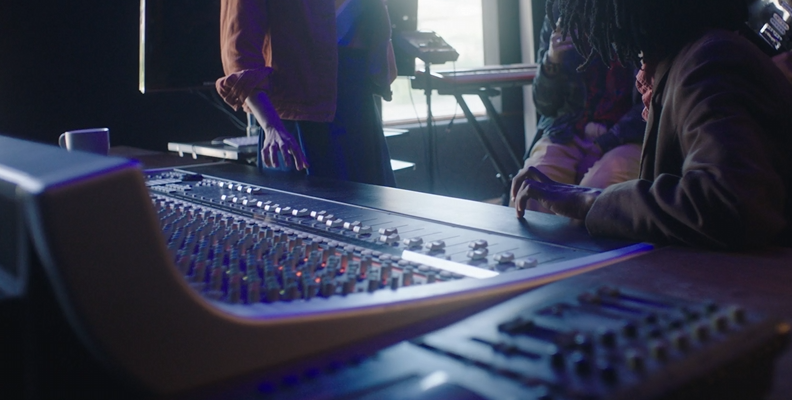
Achieve The Best Possible Sound (On All Playback Devices)
Every listening experience is different. The way people can “consume” your music these days can vary wildly, meaning that the final sound of a track must translate well on all devices.
A song can sound rich and detailed in your car sound system, but lifeless on your headphones. That’s because every playback system comes with its own sound signature, which has an impact on how your music sounds in that particular environment.
One of the most important goals of mastering is making sure your music sounds as good on hi-fi stereo systems, car speakers, earbuds, laptop speakers, record players, and phone speakers as it does in the studio.
This is a quality control task the mastering engineer is taking care of: they listen to how the entire track behaves across playback systems, adjusting EQ and filtering or attenuation to get a sound that works well everywhere.
Sometimes, all it takes is some careful EQing and stereo adjusting. Other times, the process might be more complex and require a "surgical" approach.
Not everything can be fixed during mastering. A professional mastering engineer won't be able to fix a badly recorded or mixed song, so don't expect miracles in this final step of music production.
Each stage of music production relies on the quality of work completed in the previous stage. The mastering process can give a song a final polish before distribution, but it can't fix an out-of-tune guitar or a poorly mixed drum set. Every element of your mix needs to sound good before you reach the mastering stage, if you want to create a great master.
Make Songs “Tighter”

When the mixing stage is over, you’ll notice that tracks feel a bit disconnected: drums are too wide, the vocals feel cold and detached, or instruments feel separated and distant from each other.
That’s because the mixing stage is all about treating instruments individually, and not about creating a sense of unity; this is something you handle during the mastering session.
By making music “tighter”, I mean creating a sense of cohesion while enhancing the clarity of each instrument.
There are multiple ways to achieve this, either by refining stereo width (using stereo enhancement and adjusting stereo imaging) or using a subtle reverb that gives a unique sound signature to all layers.
Aside from creating a unified whole, the mastering stage should add punch and energy to a mix by increasing loudness but also using compression and EQ to make it more immersive and galvanizing.
Mastering engineers also test multiple sample rate conversion and bit depth reduction options to make sure the music stays clear when encoded for different streaming platforms. Loudness management and dynamic processing protect the music's frequency range, which in turn preserves its punch and depth.
There are no strict rules here, as long as the dynamic processing doesn't flatten everything because you overcompress it!
Optimized Loudness Levels
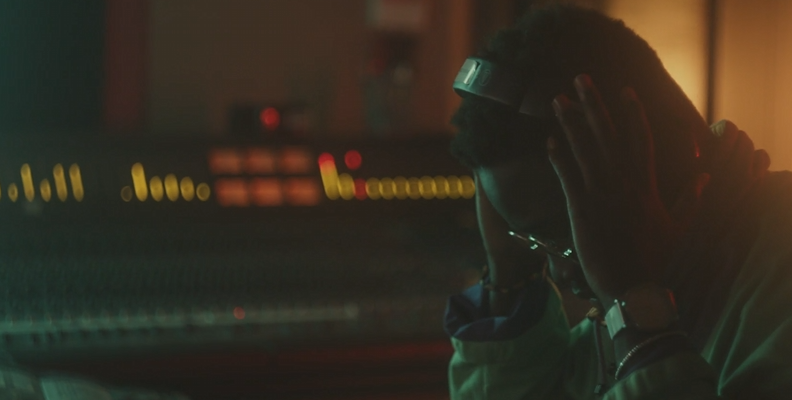
There was a time, not so long ago, when the only thing that mattered was loudness. Mastering engineers would apply insane levels of dynamic range compression, often turning an entire album's dynamics into an over-compressed mess.
It wasn't the mastering engineers' fault, though. That was the industry trend, so everyone followed suit, until it became obvious that artists were sacrificing the quality of their music for the sake of loudness.
Although the heydays of the loudness war are long gone, with the advent of streaming services and their popular playlists, getting the song’s volume right is still critical for artists of all levels.
A song’s loudness is measured in LUFS (loudness units full scale), which is a measurement more focused on how the human ear perceives sounds than the actual “volume” of a song.
To make things more confusing, each music platform has its own loudness levels you should refer to when distributing music. For instance:
- Spotify: -14 LUFS
- Tidal: -14 or -18 LUFS
- YouTube: -14 LUFS
- Amazon Music: -14 LUFS
- Apple Music: -16 LUFS
- YouTube: -14 LUFS
- SoundCloud: -14 LUFS
Does that mean you need to make different masters for each streaming platform?
You can definitely do that, but a good master at around -14 LUFS will work nicely on all platforms.
The goal is to have loudness while preserving the natural musicality of a song.
It's a delicate balance that a good mastering engineer achieves by setting peaks, applying limiting, multiband compression, saturation, and making sure that the bit depth reduction (if it's needed) happens cleanly.
Sound Consistency

An album should feel like a journey, with a sound and vibe that are consistent from the first song to the last.
Obviously, decisions made during the recording and mixing stages will have an impact on the album’s sound signature, but ultimately, it’s during the mastering stage that everything comes together, and separate songs become a cohesive and uniform work of art.
The mastering engineers will make sure all tracks have similar overall sound: volume levels, tonal balance, stereo field, dynamic range, and so on. The goal is to offer listeners a consistent and seamless listening experience.
There are a lot of details to fine-tune here: fades, crossfades, spacing, envelope shapes, transitions, effects, and compression levels. Comparing songs and matching their sonic character is hard work, but it’ll turn your album into a sonic snapshot of how your musical project sounds here and now.
Finalizing Your Music for Release
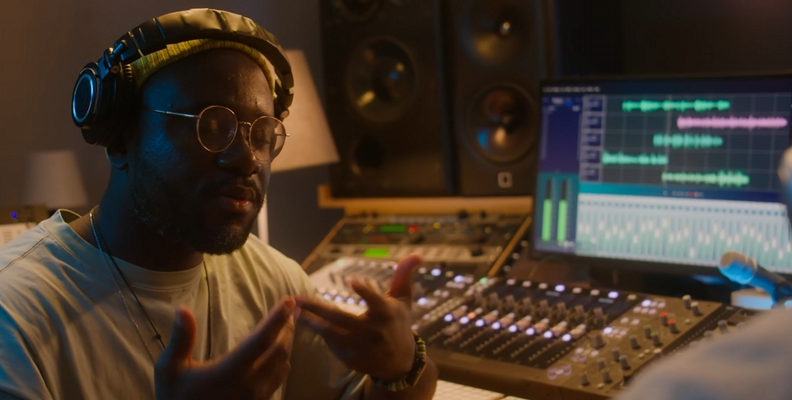
The final step in the mastering process is preparing music for distribution and doing some final checks.
Once the sound is as good as it can be, the engineer creates a final master for all the required media formats. These can be digital masters for streaming platforms and downloads, cutting master discs for vinyl, preparing CD masters, or tape.
The process of mastering tracks depends on which format the music is being made for. Tape and vinyl have different frequency responses than CDs and streaming services, so a mastering engineer must take into account the characteristics of each playback format.
For instance, a vinyl master needs to focus on dynamic processing to control low-end energy, whereas a digital master has to prevent inter-sample peaks during bit depth reduction. Some mastering engineers can do it all, while others specialize in a single mastering technique.
Final steps include setting metadata and giving a final check to make sure there are no clicks or artifacts.
Here's when we embed details such as track titles, album names, artist credits, ISRC codes, and release dates directly into the digital file or DDP image. This is what identifies your music when it's uploaded to streaming services, so all information must be correct before distribution.
Metadata simplifies royalty collection, because in those details, there's all the information necessary to identify the song's authors and anyone who's entitled to royalties. It’s a small final step in the post-production process, but one that guarantees that your final master reaches every platform with the right information attached, and that everyone gets paid for their work.
What is the Difference Between Mixing and Mastering?

Let's break down the differences between these two crucial aspects of post-production:
- Mixing is about balancing all the different parts of a song, while mastering gives it a final touch to make it sound cohesive and ready to be published.
- However, there are also creative differences. Mixing helps place every instrument in its right place in the soundstage, through volume adjustments, panning, and effects that enhance its qualities. Mastering is about making sure all these effects applied to individual tracks will sound cohesive and harmonious together.
- When mixing, you often make lots of adjustments to single audio tracks to avoid frequency clashes. In mastering, you make subtle adjustments that affect the entire song.
- During mixing, you'll work on multiple tracks one by one. On the other hand, mastering is usually done working with just one stereo file for the entire song.
- A good final mix is one in which instruments are clearly placed in the soundstage and they all have a defined sound signature. A well-mastered song will bring together all these sounds and make them feel more cohesive, add punch, and make the song louder, all without sacrificing the music's dynamics.
Common Mistakes in Mastering
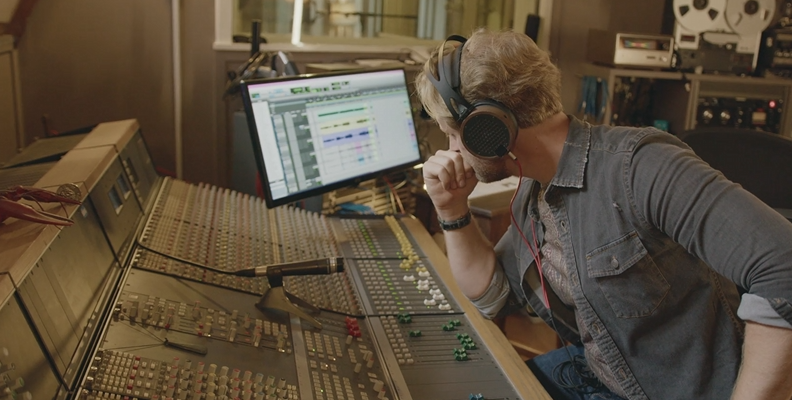
A lot of things can go wrong in the mastering stage. Luckily, some, if not most, mistakes can be avoided by having a clear workflow that helps you identify the issues that need to be addressed in a song or album.
The first mistake inexperienced engineers make is mastering without asking for (or paying attention to) reference tracks. Often, musicians have a clear sound in mind that they want to emulate, and ignoring their taste is a recipe for disaster.
Every time I entered the recording studio without providing clear and carefully thought-out reference tracks, I ended up having issues in post-production. Especially if you're in a band or working with other musicians, spend some time thinking about the type of sound you aim for; the more you define it, the easier it'll be for sound engineers to understand how that sound signature can be achieved.
Another thing that happens, and probably the most irritating one, is when a mastering engineer does not test the tracks in multiple listening environments.
A few times in my career, I had situations when the bass sounded normal on headphones but was booming in the car. Once, I had a synth solo vanish when the song was played in mono. It's a terrible feeling, especially when you realise there's something wrong after you've published your track.
Usually, this happens when things are done in a hurry or with a tight budget, but it’s always good practice to test the work of a mastering engineer. After all, it’s your music we’re talking about!
Make sure you test your album everywhere: in the car, using cheap and high-quality headphones, earbuds, your phone and laptop speakers, etc.
Sometimes, poor mastering can alter the sound signature of an album. This can happen when:
- The songs are over-compressed, crushing the dynamic range and causing distortion or clipping.
- The stereo imaging is widened and loses focus, meaning that in mono, the music will sound different, and in stereo, it might sound unbalanced.
- There’s not enough headroom. Peaks too close to 0 dB can create new clips when you export the audio file, or during the distribution or encoding phases.
Tools and Software Used in Mastering
Every engineer has their own set of tools and software they rely on, but there are certain effects and DAWs used by most modern mastering professionals worldwide.
Let's take a look at which tools you absolutely need when doing a mastering engineer's job.
Plug-ins
Usually, the plug-ins mastering engineers use to finalize tracks are:
- Loudness Meter: To keep an eye on loudness and dynamic range.
- Metering Plug-in (Spectrum/Phase/Correlation): To catch issues like mono compatibility or frequency masking.
- Linear Phase EQ: Subtle corrections and tonal shaping without introducing phase issues.
- Multiband Compressor: To control the dynamic range in specific frequency bands. You can use it to smooth harsh vocals, tighten bass, or add punch without changing the entire mix.
- Limiter: To set a ceiling for the signal and prevent clipping.
- Stereo Enhancement Tool: To adjust the stereo field and create a wider (or more focused) sound.
- Harmonic Enhancer: Use it to add harmonic content to the mix and enhance clarity or brightness. It's usually added at the end of the signal chain.
- Saturation: Some gentle distortion can add warmth and glue instruments together. You can add saturation when you want to create a tape recording effect without actually recording on tape.
Mastering Software
If you’re looking for a DAW specialized in mastering, a great option is the newly upgraded Sequoia, an industry-standard software that helped produce some of the most iconic albums of recent times, from Billie Eilish to Kendrick Lamar and beyond.

Sequoia offers a perfect mix of crystal-clear sound quality and no-nonsense workflow. It comes with a unique Hybrid Audio Engine that provides real-time playback and processing, meaning you can work at high sample rates while preserving every detail of your mix.
Best of all, its object-based editing process will revolutionize your workflow. This feature allows you to break the stereo mixdown into smaller sections and treat each one individually. Do you want to apply EQ, compression, or stereo enhancement only to one part of your track? Now you can do this in seconds. It’s a whole new level of fine-tuning when mastering.
Sequoia is also great at creating final masters for different media formats. It can export multiple versions at once while keeping levels, sample rate conversion, and bit depth reduction exactly as you set them. The final master will sound transparent, realistic, and true to your vision, with consistent playback regardless of the playback format.
Final Words
Learning how to master your music doesn't have to be hard. The first critical step is defining the sound you want to obtain and choosing tools and software that can streamline your workflow and bring your vision to life.
Boris FX Sequoia can turn audio mastering into a creative process, where you can craft your unique sound signature with professional mastering plug-ins and an optimum playback experience. Master music at the highest level, thanks to this powerful tool trusted by experienced mastering engineers worldwide.
Start your 14-day trial today!









